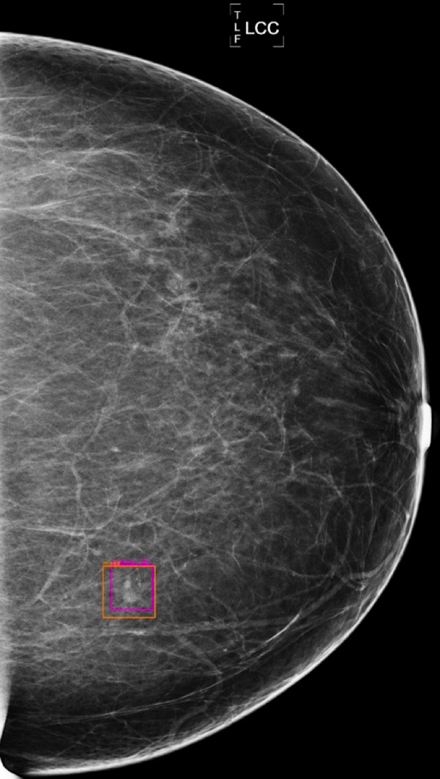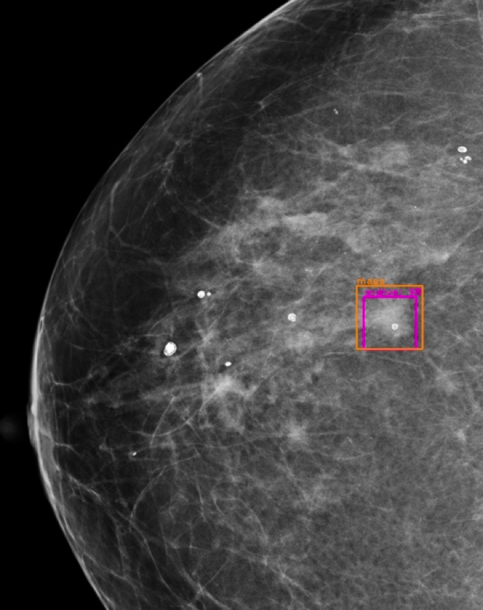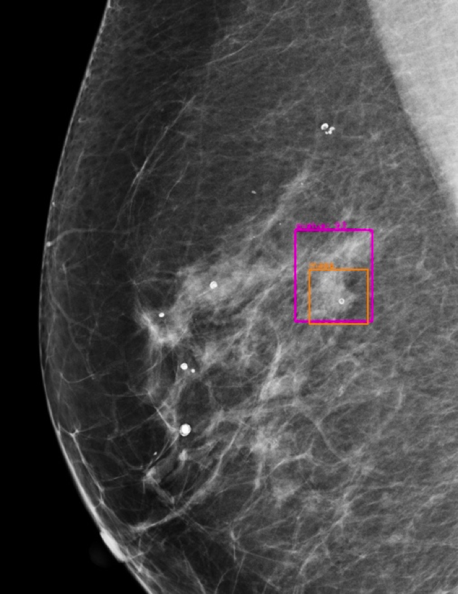Early Detection of Breast Cancer
The goal of screening exams for breast cancer detection is to identify breast abnormalities as early as possible since the likelihood of survivability greatly increases the earlier the cancer is detected. Unfortunately, cancer is often missed in initial screening mammograms between 20% and 50% of the time (Fuller, 2015). The reasons for missing cancer include: the low incidence rate of cancer, inter-observer variability, dense breast tissue that obscures abnormalities and the human factor.
Understanding these challenges facing radiologists who read mammograms, CureMetrix developed a CAD with the potential to assist them in finding cancer earlier.
CureMetrix conducted a study to investigate whether our investigational cmAssist CAD software can be used to improve radiologist sensitivity in breast cancer detection. A blinded reader study was performed with a panel of 7 radiologists using a cancer enriched data set which included challenging false negative mammograms obtained up to 5.8 years prior to diagnosis. The study showed improved cancer detection rate (CDR) by all of the radiologists with the use of the cmAssist. With the assistance of cmAssist, the sensitivity of less experienced general radiologists improved to a level higher than a fellowship trained academic breast imager. The readers detected 51% of the early cancers without assistance, however with the help of cmAssist, they detected 76% of cancers. As a stand-alone tool, cmAssist was able to detect 98% of cancers in the most difficult cases as many as six years earlier than the radiologist.
The study proved the use of cmAssist in clinical practice may expedite workflow, enhance earlier detection of cancer and reduce false negative mammograms.
Case Study 1
Early Detection Case 1: The LCC (left) view from a prior mammogram from 2013 shows a missed small spiculated cancer in a fatty breast detected by cmAssist 1140 days (more than 3 years) prior to diagnosis. The neuScore of the region of interest is 78. The other LCC view (right) is from a diagnostic mammogram taken in 2016 showing the same cancer detected by cmAssist with a neuScore of 79. The retrospective cancer is marked by the validating radiologists in the orange boxes (ground truth). This case was initially flagged by 1 radiologist, but recalled by 4 more with the assistance of the cmAssist.
Case Study 2
RCC (left) and RMLO (right) prior mammograms, showing a missed cancer detected by cmAssist 783 days (more than two years) prior to diagnosis (neuScore = 98). This case was initially marked for recall by five out of the seven readers without CAD. After reviewing the cmAssist markings, the remaining two readers converted to recall. The magenta cmAssist box corresponds with the validated actionable finding (missed cancer) that was marked in the orange (ground truth) boxes.





